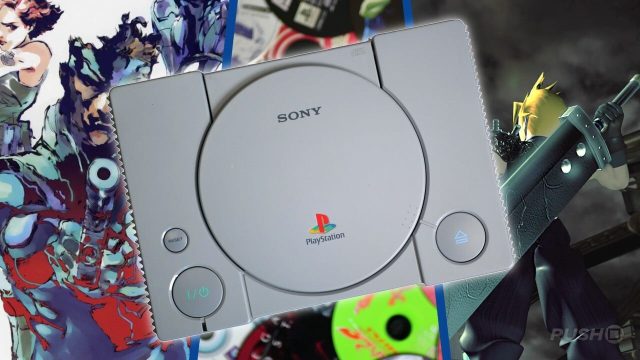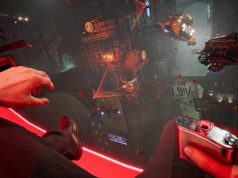What are the best PS1 games? As we look back fondly on where it all started, the PS1 really does have an incredible library of games. While the real highlight of the original PlayStation is just how diverse and varied its catalogue is, we’re here to discover which are the very best PS1 games.
Sony’s first console is legendary, pushing the entire medium forward with an emphasis on 3D graphics and high-quality sound. It also plays host to some of gaming’s most iconic titles. The legacy of titans like Crash Bandicoot, Tomb Raider, Metal Gear Solid, Gran Turismo, and so many others begins with PS1, and the Japanese RPG exploded in popularity thanks to the likes of Final Fantasy VII. The PS1’s importance in gaming’s history can’t be overstated.
It would be impossible to highlight every great game released for the console, so we’ll have to settle for the best PS1 games — and we need your help. As with all our lists, your user ratings define which games appear in this feature, and in what order. You can use the search bar below to find PS1 games and then rate them accordingly, directly impacting this list’s rankings.
Please note that a game will need to have at least 35 ratings before it appears on this list, just to keep things consistent and fair. If a personal favourite isn’t showing up here, it’s likely because it simply doesn’t have enough votes yet.
So, to business — here are the best PS1 games, as chosen by our community.

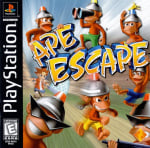
Publisher: Sony Computer Entertainment / Developer: Japan Studio
Ape Escape is a PlayStation classic. Built with the then brand new DualShock controller in mind, this is one of those early 3D action platformers that was still experimenting with the idea of analog sticks. While the controls show their age these days, the game itself is still a blast. Varied, tightly designed levels are filled with the titular apes, and it’s your job to round them all up with Spike’s array of primate-grabbing gadgets. A colourful, lighthearted game that deserves its spot in gaming history.

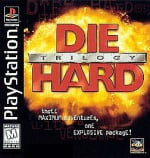
Publisher: Fox Interactive / Developer: Probe
A true gem of the PS1 era, and a callback to a time when licensed games were among the finest you could find on console. Die Hard Trilogy was unique in that it actually spanned three completely different games, each dedicated to a different Bruce Willis movie. This included a third-person shooter, a Time Crisis-style rails shooter, and a GTA-style joyriding game. All three experiences are fun in their own way, and it makes for a uniquely varied compilation.

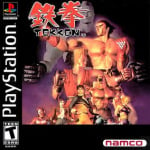
Publisher: Namco / Developer: Namco
Mechanically questionable and packed with terrifying character models, time hasn’t been kind to the original Tekken — but Namco sowed the seeds for something truly special in this janky old fighter. As a series, Tekken would evolve massively over the course of the PS1 generation, with this initial instalment doing its part to push the 3D graphics revolution on Sony’s system.


Publisher: Sony Computer Entertainment / Developer: Oddworld Inhabitants
Oddworld: Abe’s Oddysee not only taught a generation the wrong way to spell “odyssey”, it also represented Sony’s gambit of releasing diverse, interesting, and unusual games on PS1. This strange sci-fi adventure casts you as the downtrodden Abe who, against all odds, breaks free from the corporate machine and rebels against it. The combination of puzzle solving and platforming is still pretty unique today, and the game itself remains a cult favourite among PlayStation die-hards.

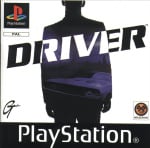
Publisher: GT Interactive Software / Developer: Reflections Interactive
The original Driver is notable for a few reasons, not least of which is its notoriously difficult tutorial, but the big key to its success was its handling model. While visually it aimed for a grounded look, the game is heavily influenced by car chase action flicks, and the driving reflects that brilliantly, allowing you to drift around with tremendous style. It has spawned many sequels that carry the idea forward, but the fundamental driving was pretty much there from the offset.

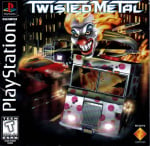
Publisher: Sony Computer Entertainment / Developer: Sony Computer Entertainment
One of the earliest first-party PS1 hits, Twisted Metal was iconic for gamers of a certain age. The pioneer of the car combat genre, which would go on to spawn several copycats, this vehicular shooter fused dark comedy with aggressive gameplay. It would go on to spawn several sequels and sell millions of copies, and characters like Sweet Tooth remain an iconic part of PlayStation today. It even spawned a hit television show recently, starring Anthony Mackie.


Publisher: Square Enix / Developer: Square Enix
Before Final Fantasy VI came along and made a whole generation realise that Japanese RPGs could tell mature stories with great characters, Final Fantasy IV basically set the standard. The plot focuses on Cecil, a warrior at odds with himself after his kingdom sparks the flames of war. Cecil’s own character development is at the heart of events, but he’s joined by a varied and delightful cast of characters as he seeks the truth of the world and its inhabitants. Still an expertly paced game with loads of memorable moments.

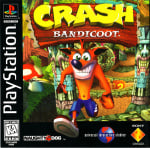
Publisher: Sony Computer Entertainment / Developer: Naughty Dog
When one thinks of the PS1, Crash Bandicoot naturally follows. Naughty Dog’s pioneering 3D platformer really showed the power of polygons as you collect wumpa fruit, spin enemies, and run from giant boulders with lots of lush, colourful detail everywhere you look. So successful was Crash that he quickly became an unofficial PlayStation mascot. Later games would enhance the core formula, but the first remains a fun, if tough, platforming gauntlet.

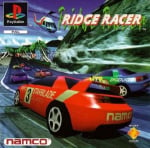
Publisher: Namco / Developer: Namco
Riiidge Racer! Namco’s classic racing series started on arcade hardware and was ported to PS1 in time for launch. A technical marvel at the time, this 3D arcade racer blew minds with its impressive visuals and speedy, drift-heavy gameplay that still feels satisfying to this day. While later entries improve and build on the formula, it’s still amazing that the signature gameplay at its core was pretty much nailed from the start.

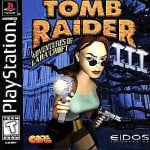
Publisher: Eidos Interactive / Developer: Core Design
By the time Tomb Raider III: Adventures of Lara Croft released, there was a sense that developer Core Design was beginning to milk the franchise just a little bit. Nevertheless, this game still sold millions of copies, even if reviewers were teensy bit softer on the overall familiarity of the experience. With locations like India, London, and Antarctica, however, this remains a memorable entry in an iconic property – and a title worth including in any PS1 owner’s collection.

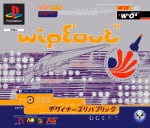
Publisher: Psygnosis / Developer: Psygnosis
Up to PS5 (come on, Sony), there’s been a new WipEout game of some kind on every new console, and it’s easy to understand why. The original is a legendary launch title for PS1, pushing the edgy image Sony was going for with this futuristic but gritty combat racer. Hard as nails but very satisfying once you learn its quirks, WipEout’s floaty, anti-grav action would be refined to a real sheen over the years, but much of its success can be traced all the way back to the start, where the music and presentation are still iconic.

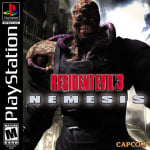
Publisher: Capcom / Developer: Capcom
The PS1 entry people, unfortunately, seem to forget about, Resident Evil 3: Nemesis deserves so much more praise than it traditionally gets. Returning fans to Raccoon City, the third mainline entry depicts Jill Valentine’s attempt to escape its zombie-infested streets. Building on what it achieved in Resident Evil 2, Capcom introduced Nemesis, a Tyrant that would stalk Jill and force you into in-game decisions over whether to fight it or run away. Some locations from RE2 were recycled, but so too was its excellence by and large. Resident Evil 3: Nemesis deserves better, because it’s a PS1 great.

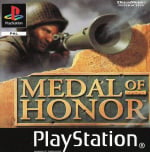
Publisher: Electronic Arts / Developer: DreamWorks Interactive
It’s perhaps difficult to recall, in this era of Call of Duty, that back in 1999, first-person shooters were predominantly the domain of PC players. Of course, games like DOOM had enjoyed successful conversions on PS1, but Medal Of Honor felt like a wholly original experience. Produced by legendary director Stephen Spielberg, this played like an interactive movie, with its cinematic portrayal of World War 2 leading to universal critical acclaim.

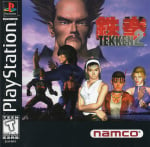
Publisher: Namco / Developer: Namco
Tekken 2 represented an immediate and gigantic step forward for the franchise, building and improving upon everything that the original game brought to the table. This incredibly popular sequel was responsible for introducing an entirely new audience to fighting games, and although there’s no question that the series’ early era peaked with Tekken 3, Tekken 2 remains a pivotal moment in the genre’s — and Namco’s — history.

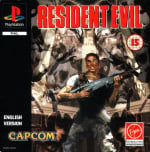
Publisher: Virgin Interactive / Developer: Capcom
Where it all started, the original Resident Evil will remain a bonafide classic for eternity. As one of the first survival horror games, its popularity helped birth a new genre that’s only gotten better and better ever since — both in its own seminal instalments and original games from other developers. The Spencer Mansion is still one of the most iconic settings in gaming, and while its gameplay certainly feels dated by this point, what Capcom was going for remains obvious. The survival horror formula has been done better in the decades since, but the first Resident Evil will forever remain relevant, and a true classic of the industry.


Publisher: Eidos / Developer: Core Design
PS1 gaming doesn’t get much more memorable or iconic than Tomb Raider, arguably one of the most famous games ever made. The legendary 3D platformer introduced the world to heroine Lara Croft, and also a level of cinematic gameplay never seen before. With its stunning, sprawling environments and tough as nails puzzle platforming gameplay, it’s one of the most important titles of all time.

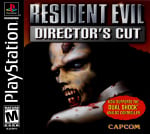
Publisher: Capcom / Developer: Capcom
One of the most iconic PS1 games of all time, Resident Evil: Director’s Cut may feel clunky and cumbersome by modern standards, but the Spencer Mansion’s pre-rendered backdrops remain as atmospheric and engaging as ever. With some truly genius puzzles and heart-pounding encounters, the only slight against this stone-cold classic is that it was surpassed by its 2002 Nintendo GameCube remake, which has since been ported to various other platforms, including the PS4.

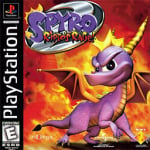
Publisher: Sony Computer Entertainment / Developer: Insomniac Games
Spyro 2: Ripto’s Rage! builds on the success of the original with a bigger emphasis on storytelling, an expanded cast, and new abilities for the diminutive dragon. It all added up to a more appealing sequel, taking the core strengths of the first game and adding much more to sink your teeth into. Adding fan favourites like Elora the Faun and Hunter the Cheetah (as well as the diabolical Moneybags), this is an important spot in the series.

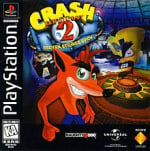
Publisher: Sony Computer Entertainment / Developer: Naughty Dog
Crash Bandicoot 2: Cortex Strikes Back is a sequel that really solidified the property’s tone and identity, instilling the cheeky protagonist with a certain kind of 90s attitude. Platforming mechanics were both expanded and refined, while the level design became more intricate and rewarding. There’s a clear confidence to Crash Bandicoot 2, which would allow the title to stand out in what was a crowded PS1 genre.

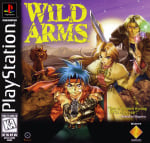
Publisher: Sony Computer Entertainment / Developer: Media.Vision
Whenever the topic of classic 90s JRPGs comes up, Wild Arms should always be mentioned. A quintessential PS1 title, it’s a fairly straightforward adventure in terms of structure — traditional to a fault, at times — but overall, it’s a timeless formula. Fusing fantastical story elements with Wild West aesthetics, Wild Arms is quite unique in its overall tone, and although its storytelling is direct, it’s well paced and strings you along on a memorable adventure.

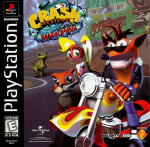
Publisher: Sony Computer Entertainment / Developer: Naughty Dog
Some would argue that the classic Crash Bandicoot formula had pretty much run its course with the second game, but Crash Bandicoot 3: Warped actually brought a lot of new ideas to the series. In terms of gameplay variety, it’s easily the most ambitious instalment in the original trilogy, providing Crash with a bunch of new platforming mechanics and pushing loads of crazy concepts in terms of level design. An incredibly slick, big budget sequel that still holds up.

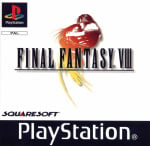
Publisher: Squaresoft / Developer: Squaresoft
How did Squaresoft follow up the immense success of Final Fantasy VII? Why, it did something completely different, of course. Final Fantasy VIII is one of the series’ most experimental mainline instalments, replacing traditional levelling mechanics with the complex, but ultimately quite rewarding, Junction system. Said system still divides opinion, but there’s no doubt that it helps Final Fantasy VIII establish a unique identity. What’s more, the futuristic setting, premise, and characters of VIII ensure that it’s still a strikingly memorable entry in a series filled with memorable entries. It’s also a game that redefined the word “whatever” for an entire generation.

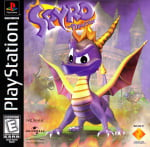
Publisher: Sony Computer Entertainment / Developer: Insomniac Games
While not Insomniac Games’ first PS1 title, Spyro the Dragon really put the studio on the map. This colourful 3D platformer has lots of wide open levels to explore at your leisure as you look for dragons to rescue and treasure to collect. Spyro’s simple move set allowed for some fun, imaginative platforming design, and some novel special stages added some variety to the mix. Still a good time today, Spyro is up there with Crash Bandicoot as a top tier mascot platformer for Sony’s first console.

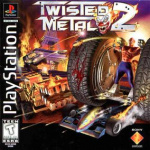
Publisher: Sony Computer Entertainment / Developer: 989 Studios
Bigger, better, more bad ass. That was the mantra for Twisted Metal 2, which took everything that was successful about its predecessor, and really amped it up. The game features some of the most iconic maps in the series, like Paris, with its shootouts in and around the Eiffel Tower, and Hong Kong, with its ridiculously detailed urban streets.

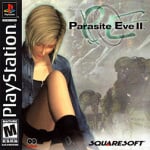
Publisher: Square EA / Developer: Squaresoft
It hasn’t enjoyed the enduring popularity of Square’s other franchises, but Parasite Eve 2 remains one of the most iconic outings on the PS1. Starring protagonist Aya Brea, this instalment ditched the Active Time Bar of its predecessor, opting for a more contemporary real-time combat system. While some reviews lamented its archaic tank controls, which had waned in popularity by 2000, the release was praised for its sublime presentation and engaging storyline.

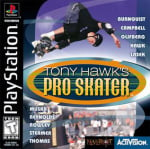
Publisher: Activision / Developer: Neversoft
Another game synonymous with PS1 is Tony Hawk’s Pro Skater — a smash hit that really raised the bar for arcadey sports titles. It featured short run times through diverse levels, each filled with collectibles, objectives, and secrets. And you replay these stages over and over, not just to complete everything, but because the core gameplay is excellent. Chasing high scores by pulling off the best combos you could manage never got old, and the top tier soundtrack certainly didn’t hurt either. Its sequels outshine it, but the first game retains legendary status.

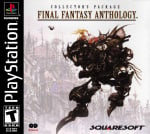
Publisher: Square Enix / Developer: Square Enix
A true, unmistakable classic, Final Fantasy VI set the bar for the series going forward. It was, of course, followed by the staggering success of Final Fantasy VII, but even today, VI remains an example of Final Fantasy at its absolute best. Its characters are still brilliant, its storytelling is still masterful, and from a gameplay perspective, there’s so much to admire. While VI isn’t as strongly associated with PlayStation as its successors, it’ll always demand respect.

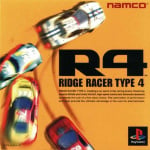
Publisher: Namco / Developer: Namco
The Ridge Racer series is pretty consistent in quality, but many would argue the pinnacle is Ridge Racer Type 4. This incredibly stylish arcade racer remains a beloved classic today, thanks to its satisfying drifting, engaging career mode, and gorgeous presentation. It has obviously been surpassed technically speaking, but R4 remains an icon among racing games.

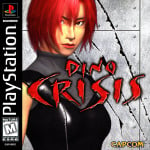
Publisher: Capcom / Developer: Capcom Production Studio 4
In the aftermath of Resident Evil’s runaway success, iconic game designer Shinji Mikami revisited many of the same concepts for the “panic horror” Dino Crisis, a title which replaced the undead for prehistoric creatures. With its real-time environments, advanced artificial intelligence, and original concept, it remains one of the best-loved games on the PS1 today.

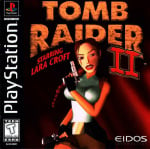
Publisher: Eidos Interactive / Developer: Core Design
Lara Croft was at the peak of her powers when Tomb Raider 2 released in 1997, and PlayStation knew it. The platform holder negotiated console exclusivity for the sequel with publisher Eidos, resulting in the cancellation of a SEGA Saturn version. While production was completed in under eight months, the game went on to become one of the PS1’s greatest, taking Lara to Tibet, Venice, and the Great Wall of China. It sold almost seven million copies, and remains one of the most revered entries in the long-running series today.

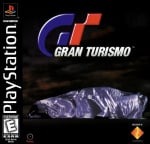
Publisher: Sony Computer Entertainment / Developer: Polyphony Digital
Back in 1997, it was hard to imagine a more realistic-looking racing game than Gran Turismo. Up until that point, racing simulators never got much of a spotlight with how popular more arcade-style games were, yet with the first GT even those without a penchant for cars found a lot to like with its responsive controls and mind-blowing graphics. As a result, it became one of the highest-rated and commercially successful PS1 games. The Simulation Mode, where you had to earn driver’s licences to unlock events and championships, added dozens of hours of satisfying gameplay. Throw in 140 cars to unlock, and if Gran Turismo was the only game you had for PS1, you were set. The sequel is equally amazing, but the first game had the most impact, in our opinion.

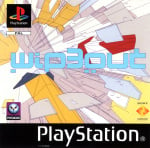
Publisher: Psygnosis / Developer: Psygnosis
While WipEout 2097 nailed down much of how the series would continue, WipEout 3 made further refinements to the formula, making for one of PS1’s slickest racing games. Featuring new analog control, varied tracks, and gorgeous presentation, it ticks all the boxes — even if it didn’t innovate quite like the previous two titles. Fans go back and forth on whether this or its predecessor is best, though some give WipEout 3 the edge thanks to its enhanced gameplay and content. A true classic.

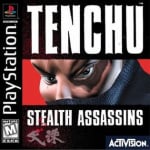
Publisher: Activision / Developer: Acquire
An early example of stealth in a fully 3D game, Tenchu: Stealth Assassins is a hilariously bloody and often brutally difficult romp through a series of shockingly atmospheric levels. Often stiff and awkward in its approach to combat, the title’s always been something of an acquired taste, but it’s easy to be drawn in by the its fantastic soundtrack and horror-tinged tone.

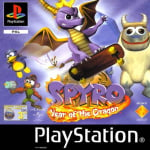
Publisher: Sony Computer Entertainment / Developer: Insomniac Games
The classic trilogy is rounded out by Spyro: Year of the Dragon, building yet further on the sturdy foundations of the series. Taking our favourite purple dragon to the Forgotten Realms, this new adventure adds even more fun characters, minigames, playable critters, and even more impressive visuals and music. It’s arguably the best of Insomniac’s trilogy, and secures Spyro’s status as a PS1 legend.


Publisher: Konami / Developer: Konami
While a more straightforward and gory take on the survival horror genre was established by Resident Evil, it was followed up by a slightly more physiological approach in Silent Hill a few years later. Konami made what you didn’t see just as terrifying as what you did as Harry Mason searches for his daughter Cheryl in the town of Silent Hill. What follows is a haunting, gripping survival horror journey into a place that scares in many more ways than just its twisted inhabitants. To this day, Silent Hill is still regarded as one of the genre’s best.

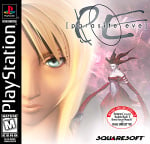
Publisher: Square EA / Developer: Squaresoft

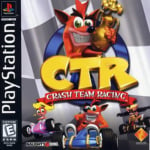
Publisher: Sony Computer Entertainment / Developer: Naughty Dog
After a trio of successful platformers, Naughty Dog tried its hand at something different with Crash Team Racing, and it remains a beloved title to this day. A challenging but rewarding boost system gave the racing some real competitive juice, and events were strung nicely together by an overarching adventure mode. Complete with battle modes and numerous playable characters, this is often highlighted as one of the few kart racers that could give Mario Kart a run for its money.

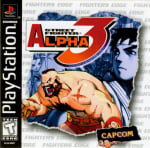
Publisher: Capcom / Developer: Capcom
While the PS1 is perhaps best remembered for its 3D fighters like Tekken and Soul Blade, Capcom proved there was still plenty of life left in 2D brawlers with Street Fighter Alpha 3. This home console port released in 1998 retained the chunky sprites from its arcade counterpart, but added in a single player campaign mode named World Tour, where you can level up your chosen fighter and even personalise their playing style. The Japanese version was even compatible with the PocketStation, so you could upgrade your chosen fighters on the go.

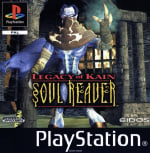
Publisher: SCEA / Developer: Crystal Dynamics
Following up on Blood Omen: Legacy of Kain with a fully 3D action-platformer was an ambitious choice, but Legacy of Kain: Soul Reaver would go down as one of the PS1’s finest adventures. Featuring some great vampire-based storytelling and satisfyingly tactile, often strategic gameplay, Soul Reaver helped set a standard for more mature action titles.

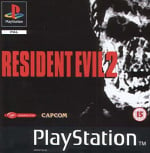
Publisher: Capcom / Developer: Capcom
Widely considered the best of Capcom’s efforts on the PS1, it was Resident Evil 2 that built on the foundations of the original survival horror experience to deliver an absolute classic. With two campaigns from the perspectives of Leon and Claire at the helm, their journies through Raccoon City document the best of the best in terms of pure survival horror. Some of its fixed camera angles remain iconic to this day, and the focus on tense gameplay ensured every playthrough was a test. If the original Resident Evil put the survival horror genre on the map, then Resident Evil 2 was its proper coming-out party.

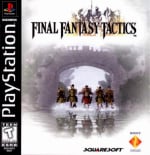
Publisher: Squaresoft / Developer: Squaresoft
Ask most people about Final Fantasy, and they probably won’t even mention the excellent Final Fantasy Tactics. But among more hardcore enthusiasts, Tactics is often name dropped as one of the greatest strategy RPGs ever made. Superbly worked and brilliantly well realised, Tactics is a PS1 masterpiece.

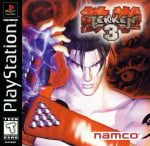
Publisher: Bandai Namco / Developer: Bandai Namco
A fighting game that defined an entire generation, Tekken 3 was a technical marvel upon its release in 1997. It was a sequel that blew its predecessors out of the water completely, delivering a truly 3D brawler that set new standards for the genre. Iconic characters, an excellent soundtrack, and outstanding visuals made Tekken 3 a go-to title for those who wished to demonstrate the power of PlayStation to friends and family.

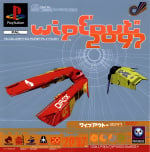
Publisher: Psygnosis / Developer: Psygnosis
While much of the groundwork was laid down by its predecessor, WipEout 2097 is a much improved sequel. Set several decades after the original, the game’s improved controls, visuals, and gameplay features mark it as an early highlight of the series. It also doubled down on the weapons system, with the ability to eliminate opponents from the race, turning it into a full-on combat racer. It’s an absolute classic, and a true icon of the PS1 era.

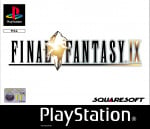
Publisher: Squaresoft / Developer: Squaresoft
Many a Final Fantasy fan would tell you that Square’s series peaked with Final Fantasy IX. An indisputable PlayStation classic, it first released as an utterly outstanding swansong for Sony’s first console. A masterfully crafted world is inhabited by excellent characters, and it’s all placed alongside more traditional RPG mechanics, refined to near perfection. With superb story pacing that whisks you from one gripping scenario to the next, it’s still incredibly hard to fault Final Fantasy IX.

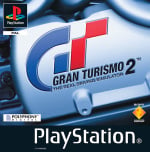
Publisher: Sony Computer Entertainment / Developer: Polyphony Digital
After the outrageous success of Gran Turismo, creator Polyphony Digital expanded on its efforts with a vastly expanded sequel, Gran Turismo 2. While many elements of the release remained the same, save for some small improvements to the physics system, the overall experience was enhanced by the vast number of cars and tracks available. The game went on to sell almost 10 million copies, and cemented the sensational series as a PlayStation great which has retained its worldwide appeal to this day.

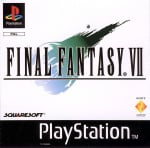
Publisher: Squaresoft / Developer: Squaresoft
The game that made Final Fantasy the juggernaut property that it is today, Final Fantasy VII is still the most popular and most revered instalment in Square’s series. Now, let’s be real for a just a minute: there are parts of Final Fantasy VII that have not aged well. The visuals are all over the place and the controls are wonky, but it’s a classic RPG that’s still fit to burst with charm and quality. Its battle and materia systems are timeless, and its cast of characters is outstanding. There’s a reason why Square Enix is still milking Final Fantasy VII, decades after its original release.

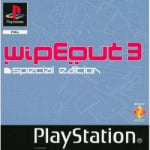
Publisher: Psygnosis / Developer: Psygnosis
Released exclusively in Europe, WipEout 3: Special Edition does exactly what it says on the tin. It’s the third mainline WipEout game that fans know and love, only with a bunch of additional tracks and content, making it arguably the definitive old school game in the series. It’s the most polished and most feature rich WipEout on PS1, and a great way to cap off the franchise on the original PlayStation.

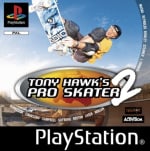
Publisher: Activision / Developer: Neversoft
The original was a breakthrough hit, but Tony Hawk’s Pro Skater 2 amped things up. While the gameplay was improved generally, it was the addition of the manual that really made a difference. Pulling off this trick allowed you to keep combos going for far longer, increasing the risk but dramatically enhancing the reward. On top of that was a whole new roster of stages to skate through, which have since become iconic, as well as a new level editor that let you build your very own skate parks. The excellent soundtrack is the cherry on top.

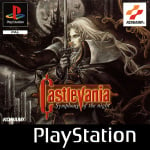
Publisher: Konami / Developer: Konami
Castlevania was at something of a crossroads in 1997. The advent of 32-bit consoles like the PlayStation and Saturn had introduced a new era of 3D visuals, and many of gaming’s biggest franchises were shedding their 2D origins and embracing the world of three dimensions. When Konami revealed that its first 32-bit Castlevania title would still be 2D in nature, there was some degree of apathy in certain parts of the gaming world – but Symphony of the Night proved such doubters wrong. It’s unquestionably one of the best video games of all time, skillfully mixing traditional Castlevania gameplay with the exploration and gear-gating of Super Metroid (hence the term ‘Metroidvania’) whilst adding in hundreds of items to collect and an RPG-style levelling system.
The scope of Symphony of the Night is truly staggering, even by modern standards; fully uncovering every inch of Dracula’s castle is an undertaking that will consume weeks of your life. The presentation is arguably Konami’s 2D zenith; superbly-animated sprites and beautiful backdrops abound, while the music also represents some of the finest audio in the Castlevania canon. While programmer Koji Igarashi – who would later become series producer – iterated on the ‘Metroidvania’ concept with his GBA and DS outings, none of them really overtake Symphony of the Night in terms of brilliance. That’s why we consider it to be the best Castlevania game of all time.
A Japan-exclusive Saturn port was released in 1998 which added in new levels and the ability to play as Maria, but it is also saddled with longer loading times and weaker visuals overall. Castlevania Requiem on the PS4 bundles the game with Dracula X: Rondo of Blood, and Symphony of the Night was also included on the earlier PSP collection, Castlevania: The Dracula X Chronicles. Finally, it’s worth noting that we nearly got a port for Tiger’s ill-fated Game.com handheld, which was cancelled before launch and recently rediscovered.

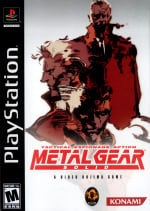
Publisher: Konami / Developer: KCEJ
Metal Gear Solid isn’t just one of the greatest games of all time; it’s also one of the most important. Not only did it pave the way for an elite-tier franchise in Metal Gear Solid, but it also proved cinematic storytelling could work in the video game medium. Helmed by Hideo Kojima, the PS1 release blended gameplay and cutscenes unlike anything else before it, paving the way for the sort of narrative-focused experiences of the modern age. Without Metal Gear Solid, you don’t get the likes of The Last of Us or God of War — at least in the form they take today.
Even without its influence and implications for the industry as a whole, though, Metal Gear Solid stands the test of time as an all-time great. The stealth-focused gameplay, excellent cast of unforgettable characters, and gripping cinematics come together to form an outstanding story game — even by today’s standards. Metal Gear Solid is the best PS1 game around, and indeed still one of the best ever made.
And that does it for our list of the best PS1 games. What do you think of our rundown? Is it sitting about right, or are there some glaring omissions? However you feel, remember that our community drives lists like this one by submitting user ratings. You can contribute to this list directly by rating your favourite (and not-so-favourite) PS1 games with the search bar near the start of this article. Of course, if you discover a game that’s missing from our PlayStation Games Database, let us know and we’ll get it added. Now all that’s left to do is leave your thoughts in the comments section below.

